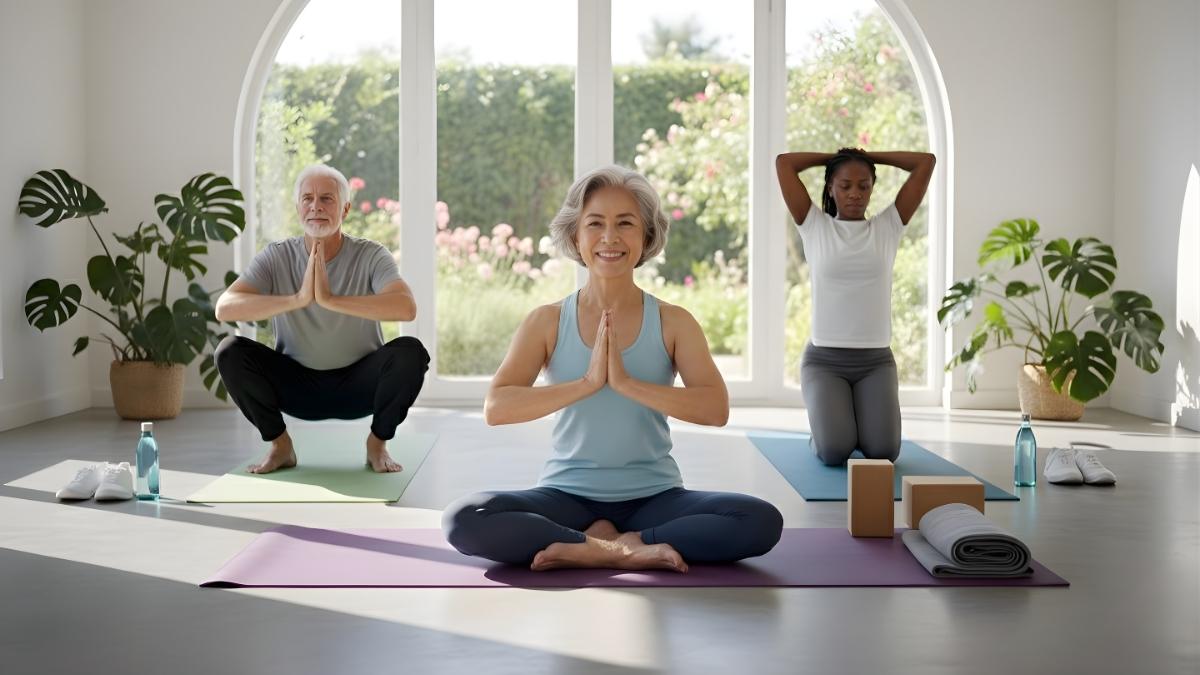Staying active after 60 can feel challenging especially if your knees or joints don’t love long walks or swimming laps anymore. But here’s some exciting news: experts say there’s one activity that may be even better for your overall health, balance, and brain than either walking or swimming. It’s gentle, enjoyable, and proven to make a real difference in how you age.
That activity is tai chi.
What Is Tai Chi
Tai chi is an ancient Chinese exercise that blends slow, flowing movements with deep breathing and mindfulness. It’s often called “moving meditation” because it focuses your body and mind at the same time.
Why does it matter? Because after 60, maintaining balance, strength, and flexibility becomes essential. Tai chi helps improve all three without putting strain on your joints. Studies show it can reduce falls, boost mood, and even improve heart health in older adults.
How Tai Chi Works – Explained Simply
You don’t need special equipment or athletic skills to do tai chi. All you need is a few square feet of space and comfortable clothing. The practice involves a series of slow, deliberate movements that flow smoothly from one to the next, all while focusing on breathing and posture.
These gentle motions strengthen leg and core muscles, improve coordination, and enhance blood circulation. At the same time, the mindful breathing helps lower stress and support mental clarity. Think of it as a workout for your body and your mind working together in harmony.
Why Experts Say Tai Chi May Be Even Better Than Walking or Swimming
Walking and swimming are both excellent, low-impact exercises. But tai chi goes a step further because it combines physical, cognitive, and emotional benefits in one routine.
Here’s a quick comparison:
| Activity | Physical Benefits | Mental Benefits | Joint Impact | Balance Improvement |
|---|---|---|---|---|
| Walking | Boosts heart health, burns calories | Clears mind | Low | Moderate |
| Swimming | Builds endurance, tones muscles | Reduces stress | Very low | Low |
| Tai Chi | Builds balance, flexibility, and strength | Improves focus and reduces anxiety | Very low | High |
Experts from Harvard Health and the Mayo Clinic highlight tai chi as one of the best exercises for older adults because it enhances balance and prevents falls one of the biggest health risks after 60.
When and How to Start Practicing Tai Chi
The best time to start is right now it’s never too late. Tai chi can be done at home, in a community class, or even outdoors in your garden or local park.
Begin with a short 10- to 15-minute session, two to three times a week. As your confidence grows, increase the time or add new movements. Many community centers and senior wellness programs offer beginner-friendly tai chi classes specifically designed for older adults.
If you prefer to learn at home, plenty of free videos and online classes walk you through simple routines. Just be sure to start slow and focus on balance and breathing rather than trying to perfect every move.
Common Mistakes With Tai Chi
- Rushing through movements Tai chi is meant to be slow and controlled. Focus on quality over speed.
- Forgetting to breathe deeply Breathing is a key part of the practice. It keeps your energy steady and your mind relaxed.
- Skipping warm-ups A few gentle stretches before starting can help your body move more easily.
- Giving up too soon It may take a few weeks to notice improvements in balance and coordination, but the results are worth it.
Best Tips to Get the Most From Tai Chi After 60
- Practice regularly — even 10 minutes a day makes a difference.
- Wear comfortable clothes and flat, supportive shoes.
- Focus on posture — stand tall, keep your shoulders relaxed, and move smoothly.
- Try group sessions — they’re fun, social, and motivating.
- Pair tai chi with a healthy lifestyle — drink plenty of water, eat well, and rest enough.
Conclusion
Tai chi is a gentle yet powerful way to stay fit, sharp, and peaceful after 60. It strengthens your body, calms your mind, and helps prevent common age-related issues like poor balance and stiffness.
You don’t need a gym, special gear, or a young person’s energy just the willingness to start slow and stay consistent. Give tai chi a try, and you might discover it’s not just exercise it’s a daily ritual for better living.
FAQ
When is the best time of day to do tai chi?
Morning is ideal since your body and mind are fresh, but any quiet time of day works as long as you’re consistent.
What makes tai chi different from yoga?
Tai chi focuses on flowing movements and balance while staying on your feet, whereas yoga includes static poses and stretches, often done on a mat.
Why is tai chi recommended for people over 60?
It strengthens muscles, improves balance, and enhances mental focus without putting pressure on joints perfect for aging bodies.
How long does it take to see results from tai chi?
Most people notice better balance and flexibility after 4–6 weeks of regular practice.
Can I do tai chi if I have arthritis or joint pain?
Yes, tai chi is gentle and low-impact. Many arthritis foundations even recommend it to help reduce stiffness and improve mobility.




